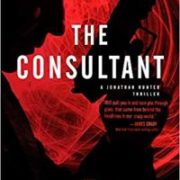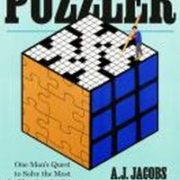Pump: A Natural History of the Heart by Bill Schutt
Everyone has a heart. Some are described as cold or big, some soft or hard. A few people have one of gold and others one of stone. If we are fortunate, it works just fine but for many their ticker is faulty. Whether using it to describe character or taking about how it functions, Bill Schutt covers it all in Pump: A Natural History of the Heart.
Schutt divides his exploration into 3 sections: Wild at Heart, What We Knew and What We Thought We Knew, and From Bad to Better. Just looking at some of the chapter titles lets you know this is not a dry scholarly text – Blue Blood and Bad Sushi, The Barber’s Bite and the Strangled Heart, and What’s Snakes Got to Do, Got to Do with It?
Before we get to the meat or heart of the book, the author tells us about nine blue whales who perished in the Cabot Strait in 2014. The tragic event made it possible for researchers to harvest the heart of one of the smaller whales (only 76 feet long). The harvesting and preservation of the 386-pound heart is a fascinating start.
Wild at Heart is a look at the circulatory systems of different species and how hearts function, the anatomy of the organ and how it evolved. To start the author goes from the massive heart of the whale to organisms so small they don’t have a heart. The horseshoe crab and its blue blood and open circulatory system are covered as are insects and their circulatory systems that don’t have a heart or carry oxygen.
This section is full of interesting facts and asides, such as the tiny masked shrew whose heart beats at a rate of 1320 beats per minute. How cold affects the heart and Ice fish and their antifreeze protein are covered as is the North America Wood Frog which can freeze (body fluids turn to ice) and then revive.
The second section, What We Knew and What We Thought We Knew, discusses the history and advancement of medical knowledge concerning the cardiovascular system. It is here that Schutt talks about the belief that the heart contained the soul of a person.
The Egyptians believed it contained all the good and bad deeds done by the deceased. They preserved it so the person could be judged in the afterlife. Aristotle also believed that the heart was the seat of intelligence, emotions and the soul. This cardiocentric view would remain for centuries to come and gave rise expressions such as cold-hearted, soft -hearted, and blue bloods.
The pioneers of medical knowledge covered included Hippocrates, Galen, Ibn al-Nafis, William Harvey, and Vesalius. Bloodletting and the use of leeches is well-covered as the practice lasted into the early twentieth century. George Washington’s treatment for a throat infection included bloodletting.
Charles Darwin’s health problems and the discovery of Chagas disease are also covered in this section before moving on to From Bad to Better. This final section covers the advances made in modern cardiology.
Schutt begins with tuberculosis (consumption) and the development of the stethoscope. To diagnose a patient a physician needed to listen to the lungs. This was done by a method called auscultation. One could tap the chest and listen to the sound resonated back or listen directly by placing your ear on the patient’s chest. After an embarrassing situation involving a plump female patient Dr. Rene Laennec saw two children playing with a piece of wood and a pin. One held the wood to his ear and could hear the other child scratching the opposite end with a pin. A tightly rolled piece of paper placed against the patient’s chest was Dr. Laennec first attempt and led to the instrument that is probably the first thing people think of when you say doctor or medicine.
Werner Forssmann’s development of heart catherization is unique in that he was his own guinea pig so to speak. After a brief sidetrack to holistic medicine, the switch from cardiocentric to craniocentric thinking, and varicose veins, Schutt discusses the phenomena of broken-heartedness.
The Burmese Python makes an appearance in this section because after feeding their hearts grow in size by 40%. As does Zebrafish and their ability to repair their damaged hearts. Research is being done on both of these processes to help those with faulty tickers. Schutt ends with the research being done with transplanting pig hearts into humans, cardiac regeneration, and using plant-based solutions to further the research.
This is an informative entertaining read with Schutt talking to us and letting his sense of humor shine through. It is peppered with black and white drawings by Patricia Wynne that illustrate what they author is saying. I highly recommend this if you want to know more about the heart and a whole lot of other fun facts.











